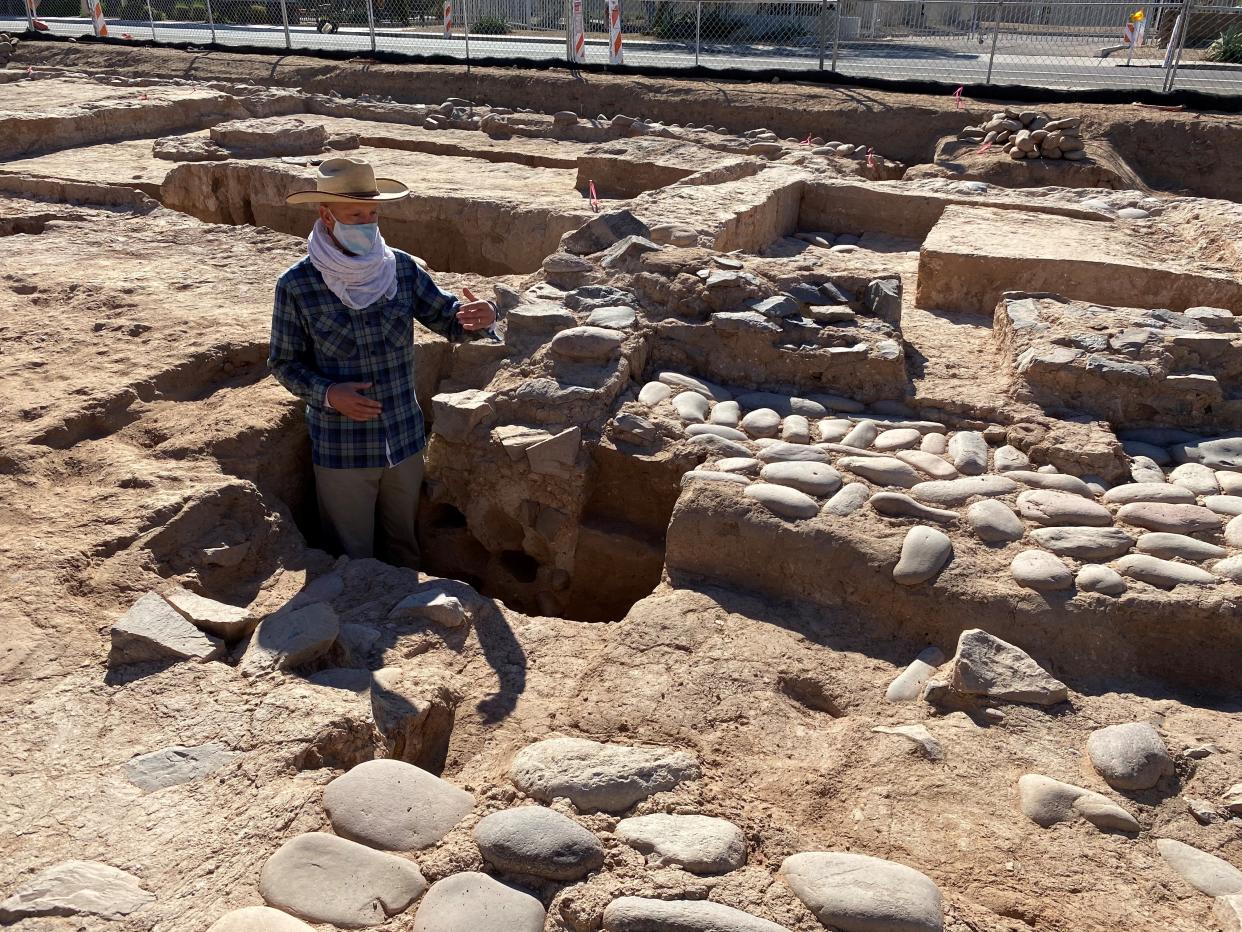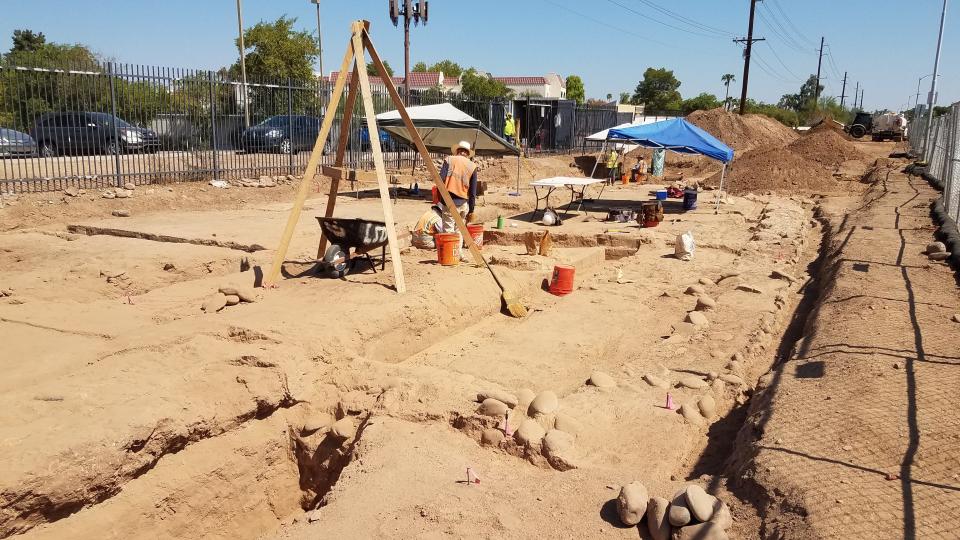Tempe resumes project after finding 1,200-year-old Native American village underground

Tempe is restarting its makeover of East Eighth Street after the project was put on pause in 2019, when the city found “significant” ancient artifacts in the form of a roughly 1,200-year-old Native American village buried under a portion of the project site.
The city project is meant to spruce up the roadway between South Rural Road South McClintock Drive with pedestrian-friendly upgrades. Tempe had to check for historical artifacts on the site before it could start construction — something required by local, state and federal laws — which led to the prehistoric discovery.
The village dates back to at least the year 850, according to Tempe’s report. Researchers believe it was home to members of the ancestral O’odham until about 1450, or about 200 before the founding of New York City.
Its inhabitants lived in “comfortable homes with plaster floors” and built a nearly four-mile canal to carry water from the Salt River to a field north of the main settlement, where they farmed maize, cotton, and squash. They were also traders who had pottery from as far away as Black Mesa, a site nearly 200 miles northeast.
But the jewel in the crown of the excavation was an “exceptionally rare adobe multi-story building” that dates back to the 1300s. Only six of them have ever been found in the Phoenix Basin.
"(That) structure is the most significant thing we found. It was the center of community life in the past, “ said Travis Cureton, a senior archeologist who worked on the site. He called its discovery “a once in a career opportunity. Most of them have already been destroyed. The last one that was excavated, a structure similar to this, was over 100 years ago."
The building had “at least seven interior spaces on its ground floor and may have had at least two additional floors above that,” according to Tempe’s report. Descendants of the village's original inhabitants believe it was a ceremonial house called a va’aki.
“It was simultaneously a residence for an important extended family in the village, a gathering place for community leaders, and a location for community religious ceremonies,” the excavation report reads.

Now that the excavation is complete, the main goal is to finalize an Eighth Street project design that somehow preserves the historic site. Tempe’s report said it’s looking to “incorporate interpretive (or) educational elements that celebrate the long history” of Tempe.
It’s unclear what exactly that might look like, but it may involve building around the city’s planned multi-use path around the ancient village so residents can visit the historic site.
"What we want to do is carefully cover it up so we can protect it. But hopefully, the final design for the multi-use path will incorporate it so that the public can come to this place and know that there was a large structure here and learn about its importance,” Cureton said in a video Tempe created about the discovery.
About 90% of the Eighth Street project design is complete and there will be two public meetings where residents can give input on the plan on Oct. 18. It’s expected to include pedestrian-friendly upgrades such as more landscaping, the multi-use path and sidewalk improvements.
Staffers expect the design to be completely finalized by next spring and plan to begin construction next October.
This article originally appeared on Arizona Republic: Tempe uncovered "exceptionally rare" ancient village on project site

